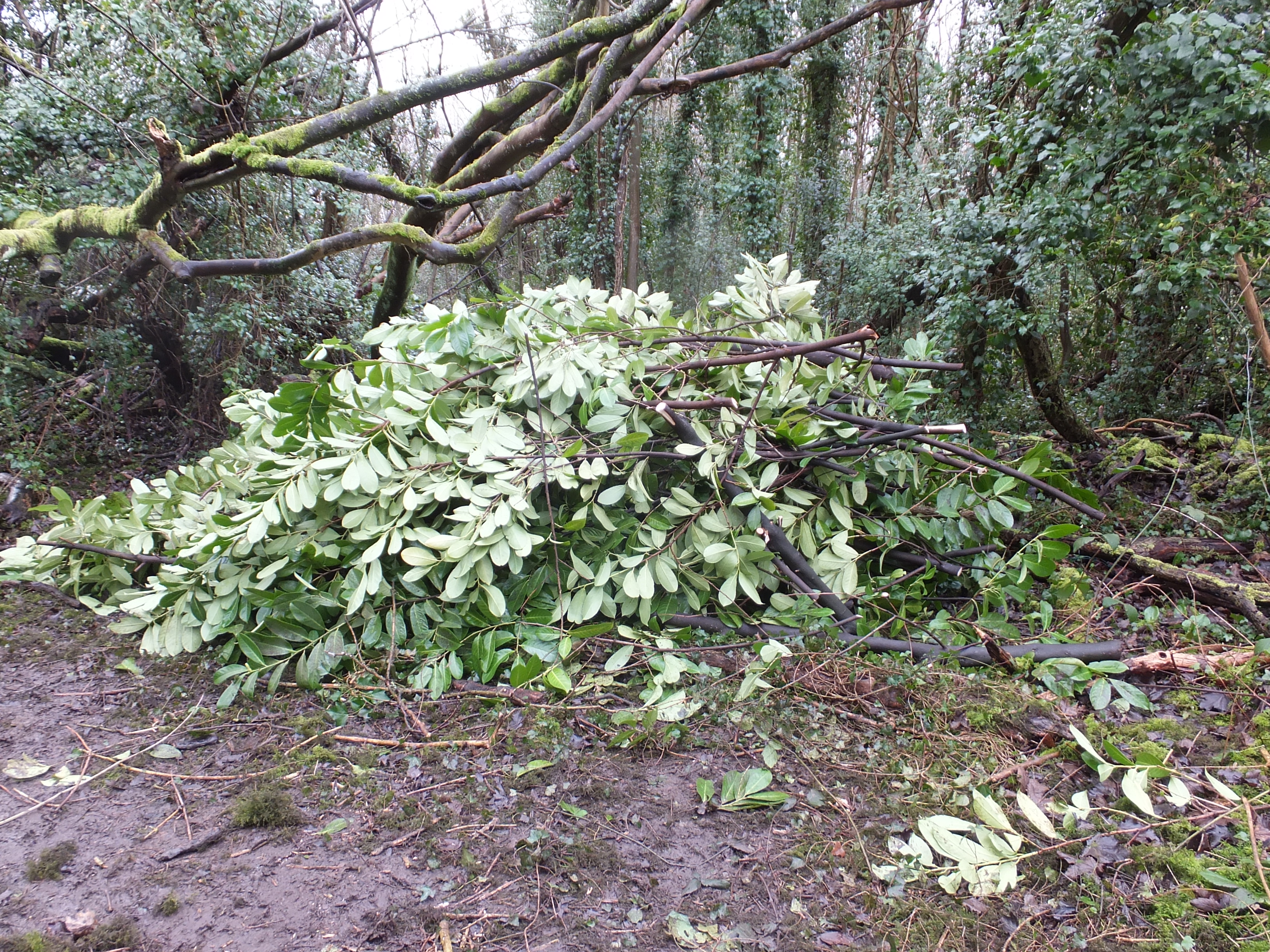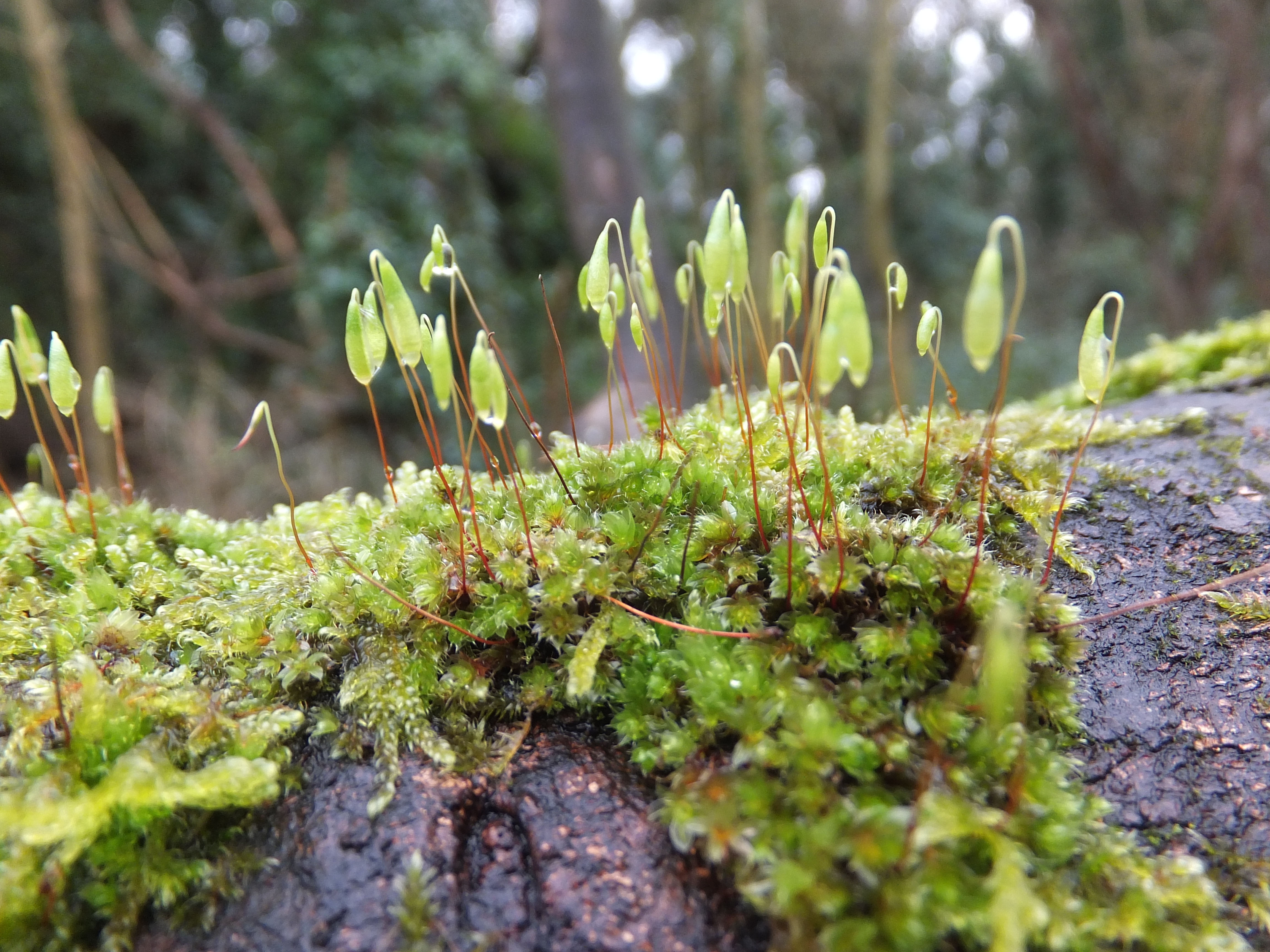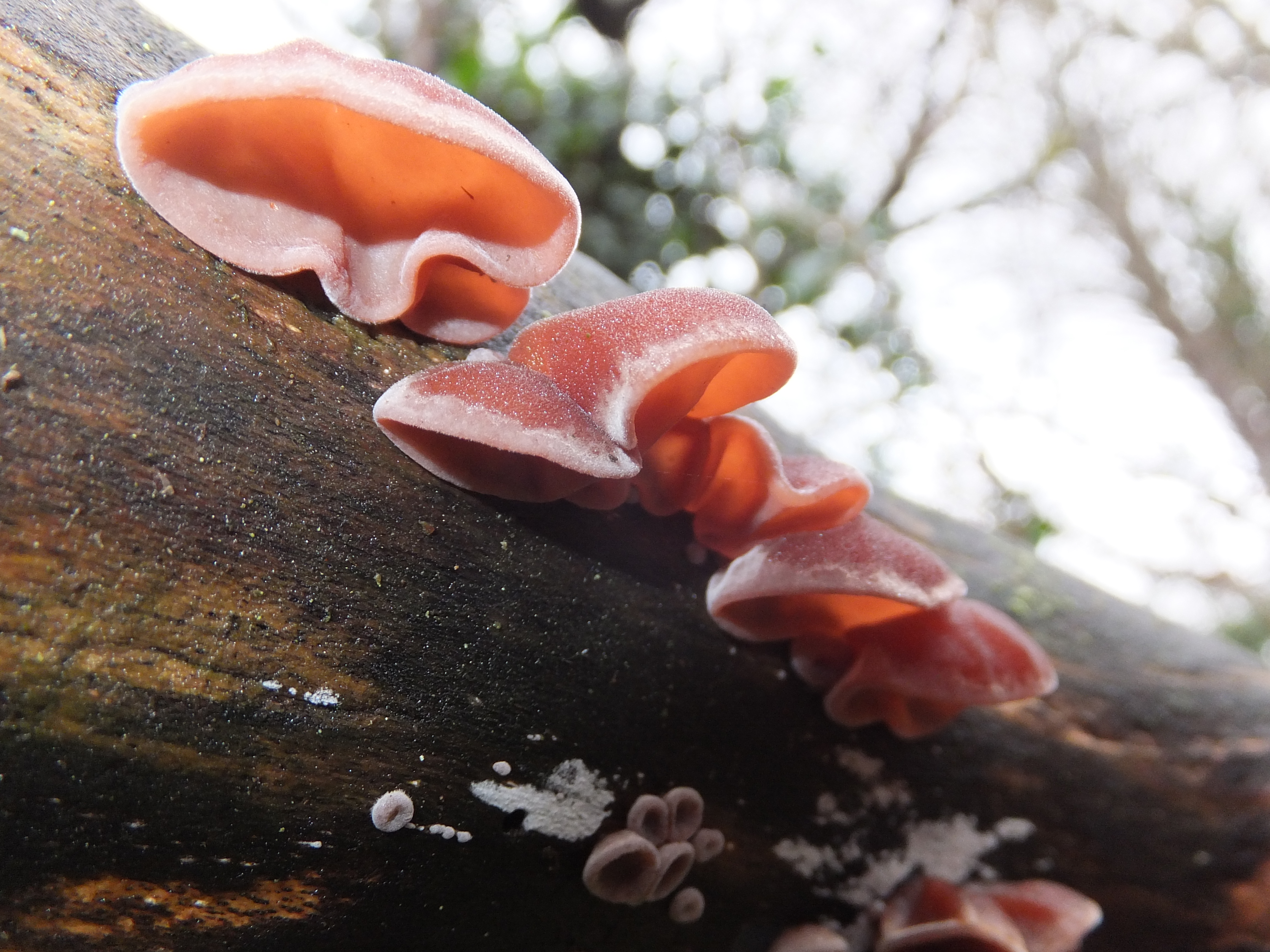On Tuesday 11th February, volunteers braved the wet conditions to spend the day working at a new site. Queen Mary’s Woodland is a large stretch of undisturbed woodland, only recently acquired by Sutton Council. At around five hectares is size, Queen Mary’s Woodland is one of the larger sites managed by Sutton Nature Conservation Volunteers.
The woodland has been left to its own devices for the past few decades, resulting in several invasive species, such as cherry laurel (Prunus laurocerasus), snowberry (Symphoricarpos albus) and Russian vine (Fallopia baldschuanica) taking over in some parts of the wood. Cherry laurel is a fast-growing evergreen shrub which originates in Southwest Asia. Perhaps its most unattractive feature is its toxicity, as the leaves and seeds of the cherry laurel contain chemicals capable of releasing cyanide. Cherry laurels had dominated several areas along the path at Queen Mary’s Woodland, so volunteers got to work removing these invasive shrubs. Because of cherry laurel’s ability for such rapid growth, they are able to out-compete surrounding plants for light and space. They also use ‘suckers’ – shoots that grow out of the base of the tree – to spread even quicker. By cutting the shrub back completely and applying chemicals to stop re-growth, native species such as early dog-violet (Viola reichenbachiana) will be able to prosper in the area.
Queen Mary’s Woodland is a fairly shaded and wet environment, which makes it an excellent habitat for bryophyte and lichen species. Bryophytes are the oldest land plants on earth and are comprised of mosses, liverworts and hornworts. These plants offer an excellent micro-habitat for species of insects and other invertebrates. Lichen are a bit more unusual, growing on the trunk of trees, they are a combination of two different organisms: fungi and algae. The two exist in a symbiotic system, which means both are working together to provide mutual benefits. Indeed there were a number of lichen species found at Queen Mary’s Woodland; one of the species identified was the common orange lichen (Xanthoria parietina), which is a leafy lichen characterised by its orange-yellow colour.
Other species spotted at Queen Mary’s Woodland include the aptly named Jelly-eared fungus (Auricularia auricular-judae). However, we are still very much at the early stages of discovering the range of animal, plant and fungus diversity at Queen Mary’s. With new site management we are hoping to improve the structural and species diversity in the areas running alongside the path, through clearing these invasive species. For the moment, the rest of the woodland will be left alone, until we have a better understanding about what is actually living there!
Eleanor Kirby-Green
SNCV Biodiversity Assistant










April 15, 2015 at 1:03 am
I walk my dog in this woodland most days. Although it is a bit overgrown in places, the woods always looked “healthy” and pleasant to walk in. In your text you say “volunteers got to work removing these invasive shrubs”. Unfortunately, they were not removed, simply chopped down and dumped at the side of the path in huge unsightly piles (as can be seen in your photo) which will take many years to rot down. Give me a healthy invasive shrub any day!
April 20, 2015 at 9:55 am
Hi John,
Thank you very much for your comment.
I appreciate that you may think the piles are unsightly and I would agree with you. However, until very recently, we have not had the appropriate access to the site to enable these (and the huge mounds where the ‘experience park’ was) to be removed.
In our normal woodland management work, we aim to leave fallen / felled deadwood (including branches) as distinct habitat piles; there is nothing wrong with providing these to rot down over many years, as there is far too little deadwood in British woodlands and this impacts on the various species that require various states of deadwood. However, cherry laurel contains cyanolipids (cyanide and benzaldehyde) which are extremely damaging to the soil immediately underneath the shrub as the leaves fall and rot down. These act as ‘herbicides’ to prevent any other species being able to compete with the cherry laurel, thereby creating ‘dead zones’. Around the path these are limited to individual shrub areas but over near Damson Way around 0.42ha of land was covered by cherry laurel, with only a few oak and sycamore able to compete against it.
In short, we will be removing the cherry laurel brash piles as soon as possible but due to the amount of material across the site that needs to be removed, this will require a contractor and arranging that takes time.
I hope that you enjoy Queen Mary’s Woodland over the spring and summer and do watch out for further works we will be undertaking.
Dave
LBS Biodiversity Officer